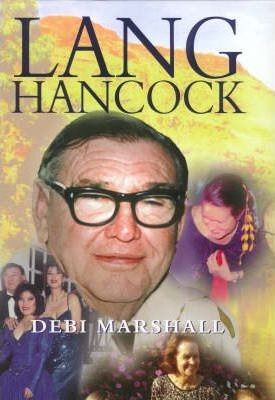Eight years after his death, and half a century after he claimed to have found the richest and largest lode of iron ore on earth, Lang Hancock continues to fascinate.
This is the story of a larger-than-life man, his achievements and failures. It is a portrait of the person behind the household name – a brilliant, belligerent man with the Midas touch whose head-to-head combat with some of the most powerful people in the land never failed to make headlines. Lang was not known for tempering his attitudes or his criticisms with tolerance.
A sixth-generation Australian, Lang’s forebears carved their name in the remote Pilbara region of Western Australia. The resilience of his pioneering ancestors and the romance and hardship of the outback were instrumental in shaping Lang’s character. He played the game by his own rules.
This is also the story of a myth and the people who helped create it – men such as Sir Joh B’jelke-Petersen, Sir Charles Court, Brian Bourke and President Nicolai Ceausescu. To his supporters Hancock was a genius, a ‘rogue bull’ who was imposing in the boardroom but happiest in the Pilbara bush. To his opponents he was an outspoken reactionary and racist, inextricably linked to the asbestos tragedy that was Wittenoom. He didn’t open doors, he put his boot through them.
Ultimately, it was Lang’s wealth that played a pivotal part in his lonely death and his ongoing legacy. Far from making him happy at the end of his life, Lang became a fractious, flinty dinosaur of a man at the centre of bitter struggles over his fortune between his daughter, Gina, and his third wife, Rose Hancock-Porteous. (Prev ownership on fep) xvii, 268, [8] p. of plates : ill., ports. ; 25 cm. First Edition #0119
Hancock, Lang (Langley George), 1909- | Businesspeople — Western Australia — Biography. | Mineral industries — Western Australia — Pilbara.
